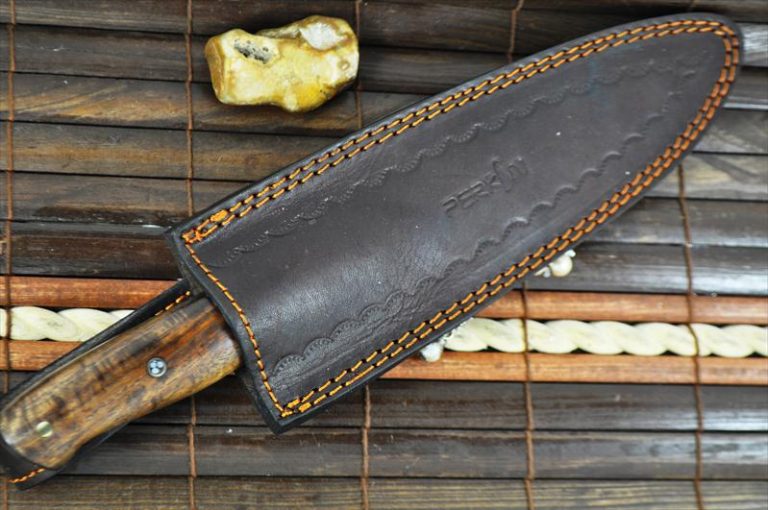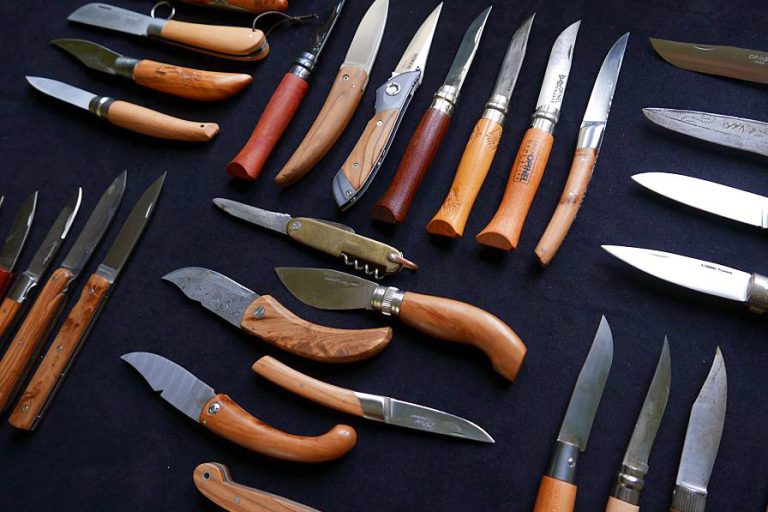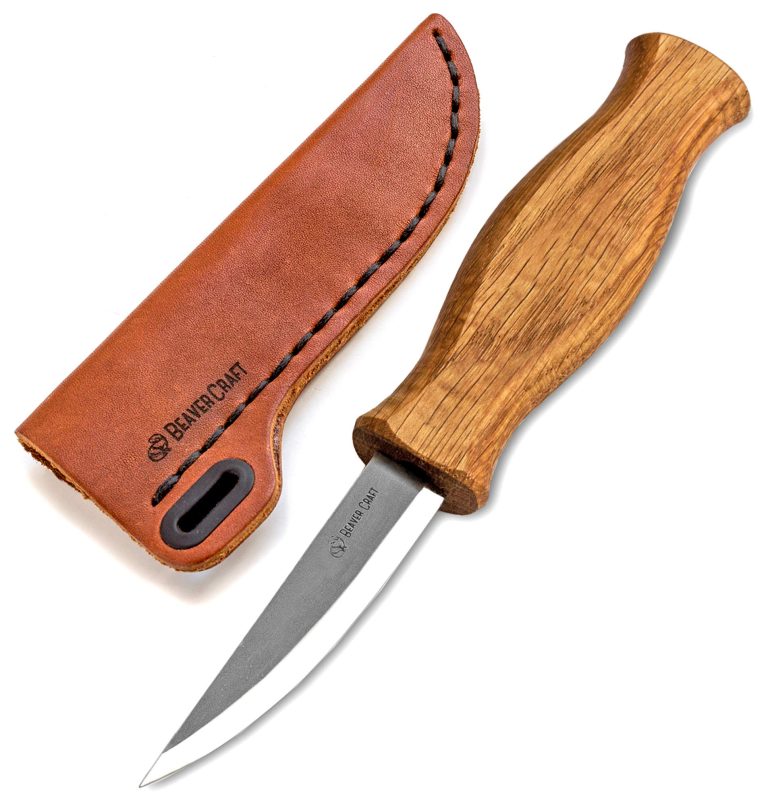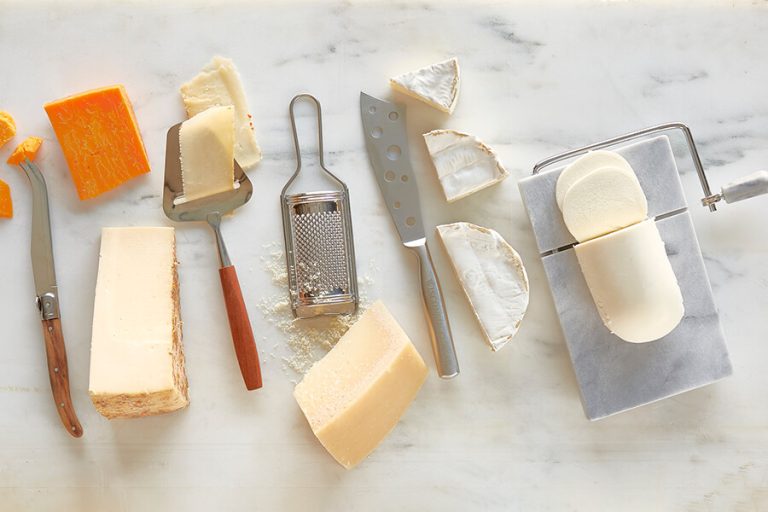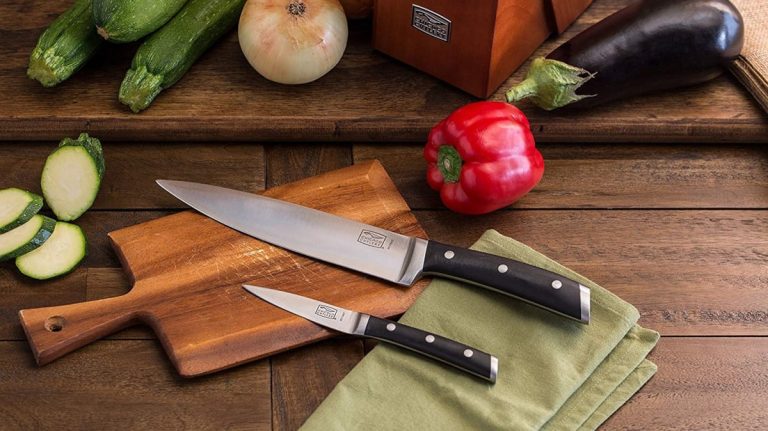Fishing Knife Vs. Standard Kitchen Knife
Fishing knives and standard kitchen knives are designed for different purposes. We will explore the differences between these two types of knives and help you determine which one is best suited for your needs.
When it comes to choosing the right knife for the job, it’s important to consider the specific tasks you’ll be performing. While both fishing knives and standard kitchen knives are used for cutting, their designs and features vary greatly. Fishing knives are specifically designed for anglers and are best suited for tasks such as filleting and preparing fish.
These knives often have a flexible, narrow blade that allows for precision cutting, making it easier to remove the skin and bones from a fish. On the other hand, standard kitchen knives are more versatile and can be used for a wide range of cutting tasks in the kitchen. These knives typically have a wider, sturdier blade that makes them suitable for chopping, slicing, and dicing various ingredients. By understanding the differences between fishing knives and standard kitchen knives, you can make an informed decision and choose the right tool for your specific needs. So, let’s dive deeper into the unique features and benefits of each type of knife in order to help you make an informed decision.
Fishing Knife: The Perfect Companion For Anglers
| Fishing Knife: The Perfect Companion for Anglers |
A fishing knife is the ultimate tool for anglers, designed to meet their specific needs and tasks. Its purpose-built design makes it the perfect companion when it comes to fishing. With a specialized blade design, it features a sharp and sturdy edge that can effortlessly handle various fishing tasks.
One of the key features of a fishing knife is its specialized blade design. The blade is typically thin and flexible, allowing for precise and controlled movements when cleaning and filleting fish. This design ensures that anglers can achieve clean and smooth cuts, enhancing the process of preparing their catch for cooking or storage.
Cleaning and filleting fish is an essential task for anglers, and a fishing knife is indispensable in performing this task effectively. With its specialized design, it tackles the unique challenges of fish preparation with ease. Whether it’s removing scales, cutting through tough skin, or separating flesh from bones, a fishing knife is the ideal tool for anglers to complete these tasks efficiently.

Credit: www.amazon.com
Standard Kitchen Knife: Versatility In The Culinary World
Standard Kitchen Knife: Versatility in the Culinary World The standard kitchen knife offers all-around utility in the kitchen, serving as an indispensable tool for various food preparation tasks. Its versatility stems from the different blade types available for different purposes. |
All-around utility in the kitchen
|
Different blade types for different purposes
|
Factors To Consider When Choosing A Knife
When choosing between a fishing knife and a standard kitchen knife, there are a few factors you should consider:
Blade Material and Construction
The blade material and construction play a crucial role in a knife’s performance. Fishing knives are typically made from stainless steel, while kitchen knives can vary in materials such as carbon steel or ceramic. Consider the type of fishing you do and the level of durability and corrosion resistance required for the knife. Additionally, the blade design can differ, with fishing knives often having a serrated edge for cutting through tough fish scales.
Handle Design and Ergonomics
The handle design and ergonomics of a knife can greatly impact comfort and control during use. Fishing knives usually have handles made of materials like rubber or textured plastic, providing a secure grip even when wet. On the other hand, kitchen knives often have handles made of wood or composite materials, offering a classic and stylish look. Consider the grip, balance, and overall feel of the knife in your hand.
Maintenance and Sharpening Requirements
Another important factor is the maintenance and sharpening requirements of the knife. Fishing knives often require frequent cleaning and drying to prevent corrosion, especially when used in saltwater environments. Sharpening serrated edges can also be challenging. Kitchen knives, on the other hand, may require regular honing and sharpening depending on the type of steel used. Consider your willingness to invest time and effort in the knife’s maintenance.
Blade Design And Functionality
Fishing Knife Vs. Standard Kitchen Knife
When it comes to blade design and functionality, fishing knives and standard kitchen knives differ in crucial ways. Fishing knives are equipped with a curved and flexible blade, specifically designed for the precision required during fish preparation. This unique design allows for precise cuts and delicate maneuvering around bones and scales.
In contrast, standard kitchen knives feature a straight blade that provides controlled slicing for a variety of culinary tasks. The straight blade ensures consistent and even cuts, ideal for chopping vegetables, slicing meats, and other general kitchen purposes.
| Fishing Knife | Standard Kitchen Knife |
|---|---|
| Curved, flexible blade | Straight blade |
| Precise cuts for fish preparation | Controlled slicing for various culinary tasks |
| Maneuvering around bones and scales | Consistent and even cuts |
In conclusion, the blade design and functionality of fishing knives and standard kitchen knives are tailored to suit their respective purposes. However, it is important to choose the right knife based on your specific needs and culinary requirements.
Performance In Fishing Tasks
table { font-family: arial, sans-serif; border-collapse: collapse; width: 100%; }td, th { border: 1px solid #dddddd; text-align: left; padding: 8px; }Fishing Knife Vs. Standard Kitchen Knife
When it comes to performance in fishing tasks, there are notable differences between a fishing knife and a standard kitchen knife. A fishing knife is specifically designed to efficiently clean and fillet fish, whereas a standard kitchen knife may require some adaptation but can still be used effectively.
| Fishing Knife | Standard Kitchen Knife |
|---|---|
| Efficiently cleans and fillets fish | May require adaptation, but still usable |
The key advantage of a fishing knife is its specialized design, which allows for precise and effortless cleaning and filleting of fish. Its sharp, narrow blade is perfectly suited for removing scales, cutting through tough skin, and separating fillets from the bone.
On the other hand, a standard kitchen knife, although not specifically designed for fishing tasks, can still be used. However, it may require some adjustments in technique and may not provide the same level of efficiency as a fishing knife.
In summary, while a fishing knife is the ideal choice for fishing tasks, a standard kitchen knife can still be used with some modifications. Consider investing in a fishing knife for maximum precision and efficiency when dealing with fish preparation.
Versatility In Food Preparation
Fishing Knife Vs. Standard Kitchen Knife
When comparing a fishing knife to a standard kitchen knife, the level of versatility in food preparation becomes apparent. Fishing knives are primarily designed for fishing tasks, limiting their functionality outside of this domain. On the other hand, standard kitchen knives are optimal for a wide range of culinary activities, making them a more versatile choice in the kitchen.
A fishing knife, with its specialized features and design, serves its purpose effectively when it comes to filleting and cleaning fish. However, its limited functionality restricts its potential in other kitchen tasks, such as slicing vegetables, cutting meats, or chopping herbs.
In contrast, a standard kitchen knife offers a broad range of uses. Its sharp blade, ergonomic handle, and balanced weight make it an ideal tool for various food preparation endeavors. From dicing onions and slicing fruits to carving roasted meats and chopping herbs, a standard kitchen knife excels in all these culinary activities.
Therefore, when considering the versatility required in food preparation, the standard kitchen knife emerges as the preferred choice due to its ability to handle a wider array of kitchen tasks compared to the fishing knife.
Durability And Longevity
| Durability and Longevity |
| Fishing Knife: Designed to withstand harsh conditions |
| Standard Kitchen Knife: May require more frequent maintenance |
When comparing the durability and longevity of fishing knives and standard kitchen knives, it is important to consider their specific design and purpose. A fishing knife is specifically crafted to withstand harsh conditions, such as exposure to saltwater, scaling fish, and cutting through tough materials. Its construction typically includes corrosion-resistant materials like stainless steel and features a sturdy handle for a secure grip. This design ensures that the fishing knife can endure challenging environments and frequent use without easily wearing out.
On the other hand, standard kitchen knives may require more frequent maintenance to maintain their longevity. While they are designed for regular kitchen tasks, such as slicing and dicing fruits, vegetables, and meats, these knives are not built to withstand the same level of strain as fishing knives. Regular maintenance, including sharpening and proper storage, is necessary to ensure their effectiveness and prolong their lifespan.
Convenience And Portability
| Fishing Knife | Standard Kitchen Knife |
| A fishing knife is designed to be compact and easy to carry on fishing trips. | On the other hand, a standard kitchen knife is usually kept in the kitchen and is not readily portable. |
Maintenance And Care
Both fishing knives and standard kitchen knives require proper maintenance and care to ensure their longevity and effectiveness.
A fishing knife should be occasionally cleaned and the blade needs regular upkeep to prevent rust and corrosion. It is recommended to wash the knife with mild soap and water after each use, removing any traces of fish or debris. Additionally, **store the knife in a dry place** and dry it thoroughly before storage to avoid moisture accumulation.
On the other hand, a standard kitchen knife requires regular sharpening to maintain its sharpness. A **knife sharpener or honing rod** can be used to maintain the edge. Proper storage is also crucial for kitchen knives. **Consider using a knife block** or a knife magnet strip to prevent blade damage and ensure safety.
In summary, while a fishing knife requires occasional cleaning and blade upkeep, a standard kitchen knife needs regular sharpening and proper storage. By following these maintenance guidelines, you can ensure that both types of knives will remain durable and perform optimally for their intended purposes.
Cost Comparison
| Fishing Knife | Standard Kitchen Knife |
|---|---|
| The price range for fishing knives varies depending on the brand and features. You can find fishing knives starting from around $10 for basic models, up to $100 or more for high-end, professional-grade versions. | Standard kitchen knives also have a wide range of prices, catering to different budgets and preferences. You can find entry-level kitchen knives for as low as $10, while high-quality kitchen knife brands can go up to $500 or more. |
| Fishing knives offer various options depending on your needs. Some common types include folding knives, fillet knives, and versatile multipurpose knives. Each type has its pros and cons, so it’s essential to consider your specific fishing requirements. | When it comes to standard kitchen knives, there are several renowned brands available in different price points. Some popular kitchen knife brands include Wusthof, Zwilling J.A. Henckels, and Shun, offering a range of options from basic chef’s knives to specialized blades for specific tasks. |
Conclusion
When it comes to choosing between a fishing knife and a standard kitchen knife, it ultimately depends on your intended use. If you’re an avid angler who frequently goes on fishing trips, a specialized fishing knife offers the durability and versatility needed to handle tough outdoor conditions.
Its sharp blade and non-slip handle make it ideal for tasks such as gutting, scaling, and filleting fish. On the other hand, if you primarily use knives in the kitchen for everyday cooking tasks, a standard kitchen knife is the more practical choice.
Its precision and versatility make it suitable for a wide range of food preparation needs. Remember to consider factors such as blade material, handle comfort, and overall performance when making your decision. Whether you’re a fishing enthusiast or a home cook, investing in a high-quality knife that meets your specific needs will enhance your experience and ensure efficient and enjoyable knife work.

